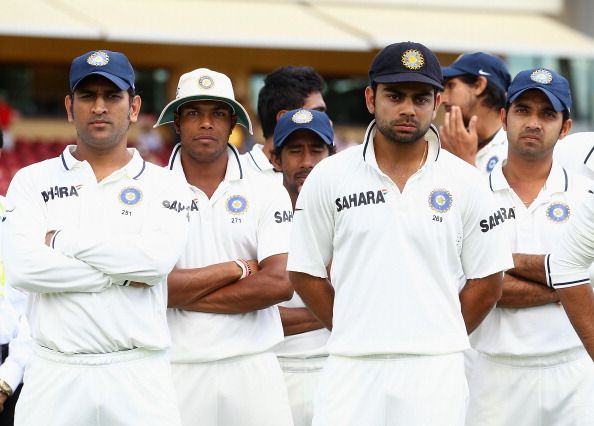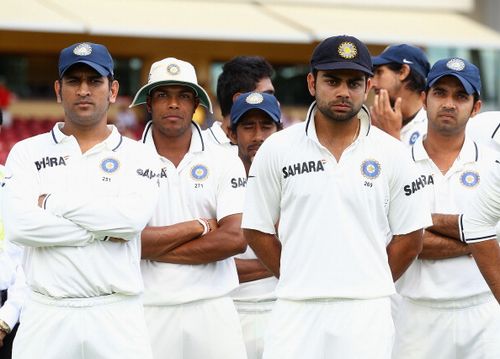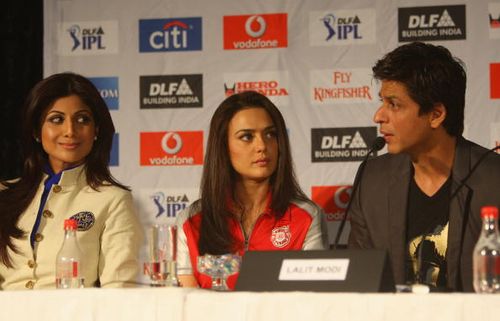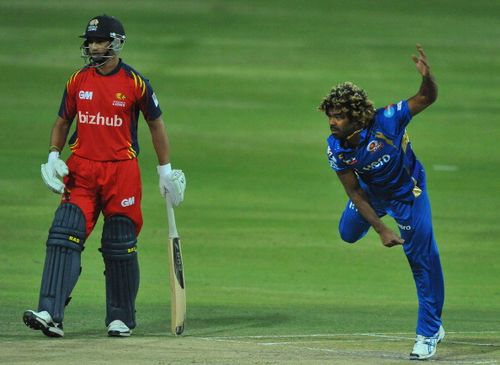
Cricket and India – Is IPL destroying this love story?

You may refer to this article as an episode of India’s, or maybe, the World’s longest running soap opera – Cricket. Like all good soap operas, it has got love, tears, lots of happiness, sadness, intrigue, deceit and like all good soaps, it jumps twenty years, and the audience’s interest changes. And that’s exactly what Cricket has done; it has jumped twenty years and evolved (or devolved maybe) into a 20 over game.
And not surprisingly, T20s too have borne many resemblances to the previous changes cricket has seen. From timeless Tests to five days Test matches, to 60 over games and then, 50 over games. The game’s getting shorter all the time.
The difference between Test matches and T20s, is that you play Test matches for 5 days to determine a winner whereas it just takes 20 overs (that is almost 3 hours) to decide the winner of a match in Twenty20s.
Being an Indian, I always like to compare Test match cricket to the Mahabharata. One fought by the day, then at sunset, everyone went back home, planned out their strategies and came back the next morning, fought on and went back home again! (Of course, in cricket, everyone was alive to come back and fight the next day.)
The debate is not as simple as you would like it to be, for the ultimate result that all us cricket maniacs want, is a version of the game that allows talent to be showcased without making the time taken to determine a winner too long.
What is the debate all about? Well, in a nutshell, it is about deciding the ‘better’ format out of the two – Test cricket and Twenty20. The debate is further fuelled by the success of BCCI’s brainchild, the Indian Premier League. Not surprisingly, the killing effect of the IPL on the purest form of the game has been talked about ever since the first ball was bowled. Cricket was never this fast paced or turbulent but the inception of one tournament, changed all. Yes, the IPL has changed cricket into a prime time extravaganza.

(Cheerleaders “cheering” their team in one of the IPL matches) Does cricket really need this? You don’t need to give it a second thought.
From being the game of royalty that it used to be, cricket has now turned into this glitzy source of entertainment. This sport has seen everything, from two gentlemen dressed in crisp blazers and hats coming out in their apparel just to toss a coin, to half-clad women dancing to the tunes of latest blockbuster hits after a boundary is scored. So, what if the batsman doesn’t care? You still have the cheer-girls. Why? Ask the people who hire them. All of a sudden, look what they did to our nice little family game with a combination of heavy music, dancing lasses and firecrackers. All this, and your nice, little, family game has started raking in some serious moolah. From Gentlemen, Grace, Gavaskar and Geoff Boycott, the IPL has gone out of the way and shifted the sport’s focus to Girls, Gold, Glamour and Glitz.
Why has the IPL faced opposition? Test cricket, the original form of the game, is supposedly being killed by T20 or more appropriately, the IPL. The first Twenty20 International was played in 2005 just as an experiment to see how a shorter game of cricket goes down with the crowd. It didn’t have any immediate success, but there wasn’t anything negative said about it as well. Cricket isn’t the biggest sport on the planet, so T20 took a little bit of time to get acquainted with the fans and the players. But since then, what had been thought of as an experiment by its makers, has revolutionized the sport altogether. The change has been taken positively by some, but not so well by the others. As for me, I belong to the latter group. The ‘little’ change that T20 was meant to bring with itself, has seen “The Gentlemen’s game” turn into a carnival of ball bashing and glamour. Yes, television is and will be sport’s biggest ally in the time to come, but what this blend of Bollywood and cricket has done, is put the sport in the cricketing tournament on back seat. The owners of the teams aren’t small-time companies or city-clubs. They are all owners of big shot corporate firms, Bollywood stars and wives of nation’s richest men. (“Hey honey, guess what I got you for your birthday; a cricket team with Sachin Tendulkar as the captain!”)
All through the years, we Indians have only had two things to get behind and support wholeheartedly – our cricket team and the Indian Army, which we wouldn’t like to see in the news much often. But what the IPL has done, is that it has pitted a city against another city and all of a sudden, besides the Indian national team, every Indian has at least one out of the 9 city teams to support. Also, the money which the league comprising these 9 teams makes, is astounding. For me, the IPL is one of the reasons that a budding player doesn’t have that great a motivation to play for his country. And it’s not only India which I am speaking about here.

Bollywood has played a significant role to make the IPL an event watched by the whole family.
No, doom-sayers like me don’t dislike Twenty20 or the IPL; we’re scared that they’ll make our cricketing passions obsolete. As we fret about the future of the four-innings game (Will the Ranji Trophy survive? How will we nurture future Test cricketers if it doesn’t?), it might help if we begin by recognising that we aren’t alone. Historically, what is happening to cricket today has happened to other forms of entertainment – music, for example (Who better to tell you this than a Beatles lover).
People like me, who prefer Test cricket to the limited-overs forms of the game, are often called “purists”. This is the wrong term, fans of Test cricket don’t see the long game as the “purest” form of the game; they think of it as the classical form. It is classical because it is a codified, cultivated form of the game, distinct from both local/popular/primitive forms of bat-and-ball games as well as modern abridged variants such as ODIs and Twenty20s. Classical also in the sense of being authoritative and definitive. Rahul Dravid, for example, chose the players for Vijay Mallya’s IPL franchise on the principle that good Test players ought to be able to play Twenty20 cricket, because the four-innings form teaches the Test player a classical technique that can be turned to any purpose, a style for all seasons. He was horribly wrong (as we now know) but this was more than an individual error; it represented the collapse of the classical ideal in cricket, that class and skill in your technique makes you a complete cricketer.
So, in my opinion, the number of Test matches in a year may reduce but the format can’t completely disappear. The day it does, I am sure many of us will stop watching cricket.
The counter opinions to this debate are many.
For instance, I read an argument somewhere – “ T20 cricket has imbibed lot of self belief among the players chasing a massive target at a inflationary run rate of 8-9 runs per over from 20 overs. Gaining proficiency in this kind of games really helps to score any target on scoreboard in ODIs too. What Test cricket does, is just nurture textbook cricketing skills.”
I don’t completely agree with this, but we are all entitled to our own opinions, aren’t we?
The longer format has more to it than just plain textbook skills. It tests the temperament, the character and the mettle of a player. I would put it this way, Tests cricket makes a player grow into a sportsman, whereas the IPL turns him into a party-animal.
A shorter version has increased the craze towards the sport. People are more interested in watching it rather than the traditional and conventional formats of the game due to the gala that surrounds it.
T20 does not recognise the true skills that a cricketer ought to possess. It provides a much shorter duration of gameplay where the key word is to go for the big shots and score quickly rather than hone their skills instead, and build an actual innings.
Even the players with sound technique are forced to adapt to a rather bashful and unconventional methodology, which kills and denounces the purity and skill present in abundance in Tests or even the ODI format. Murali Vijay is a fine example.
I would say that IPL was the reason (besides Dhoni’s Spartanic captaincy) for the worst ever Indian performance in Australia and England recently. Key players aren’t being used wisely, and they aren’t being stopped from playing in the IPL no matter how serious their fitness record is. They are not the ones to blame of course. I mean, who the hell would skip playing a month when they could be getting their hands on a paycheck of 2 million US dollars (almost Rs 11 crores). It’s the management that is to be blamed. The BCCI altogether is to be blamed. The toll of a growing injury list on Indian cricket is telling. Not having Zaheer Khan in their roster against England in England, with banana swing on offer, was a death knell on India’s chances at winning the series. And why did he miss the series? He was injured in practice before a Mumbai Indians game because Mohd. Ashraful hit the ball straight on his shin. With more IPL matches aggravating his injury, he broke down at the start of the 1st Test against England.
“IPL is used as a breeding ground for Test teams”. I am sorry, but this notion is utter nonsense.
I was sad when I saw Suresh Raina’s name being announced in the Test side for the first time. Not really, no, I was laughing my rear off. Someone like Raina gets a debut before Pujara! It calls for a round of applause for the Indian selectors.
When it comes to Test cricket, players like Jacques Kallis, Martin Crowe, Steve Waugh, Brian Lara, Rahul Dravid and Sachin Tendulkar have invariably done well, be it home or away (even in the most extreme conditions) because they possess all the basics of batting and their technique is good as ever in cricket. Let me not get started on the batting technique of MS Dhoni. I respect him. He’s got lot of fans round the world and I’m not here to make enemies.
So, just for quick entertainment, this beautiful game cannot be sacrificed. I’m not saying that this format should be put to a halt but these matches should be given least priority. It is sad that players are retiring from Tests and ODIs nowadays to focus on T20 club cricket. Lasith Malinga, for instance, retired from Tests to focus on playing for the Mumbai Indians (Of course, he is more popular in Churchgate than he is in all of Sri Lanka).

Malinga: I don’t think he’s showered with the kind of love anywhere in the world which they have for him in Mumbai.
What the Twenty20 format and IPL has done to cricket is for everyone to see. If you think that IPL can feed you another Dravid or another Laxman, you are another victim of the fallacy. I can’t help but think that the IPL is a potent threat to cricket worldwide and especially, to India’s beautiful love story. According to me, if the IPL is here to stay, this love story would be cut short and transformed into nothing more than mundane showbiz.
Cricket’s current state in India is in tatters. The game needs to be saved urgently.
At the end of the day, no matter what happens, India remains cricket’s greatest ally, and both need each other as badly as Yusuf Pathan needs a dentist.